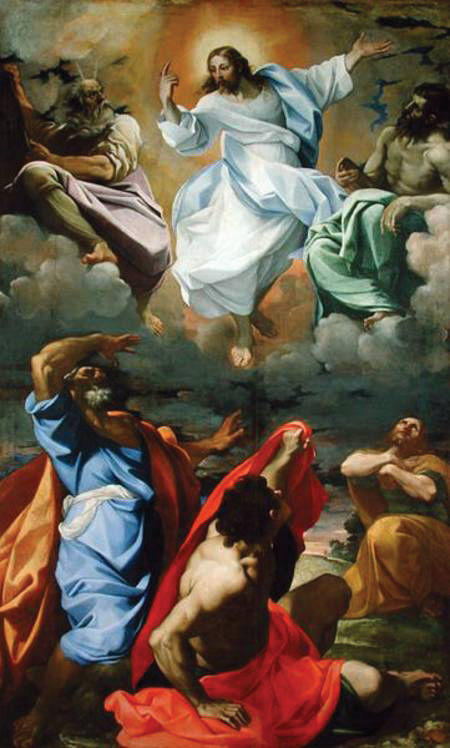Our Lenten pilgrimage has only just begun. We have received ashes, symbol of repentance and renewal; and we have begun our ascetical program.
On the first Sunday of Lent the Church invited us to consider the Lord’s victory over Satan in the desert, and we were reminded that Christ is with us in all our temptations. Through Christ’s victory, our temptations become opportunities for greater self-awareness and growth in virtue.
But now on the second Sunday of Lent, the Church places before us something unexpected, a Gospel icon that challenges our penitential mood — glorious illumination, bright beauty, Christ transfigured:
“Jesus took with him Peter and James and John his brother, and led them up a high mountain apart. And he was transfigured before them, and his face shone like the sun, and his garments became white as light” (Matthew 17:1-3).
This manifestation of Christ’s divinity at the Transfiguration strengthened Peter, James and John through an experience of contemplative vision. It enabled them to endure what they would shortly witness in Jerusalem. They would soon become active participants in the betrayal, passion and death of Christ; and through these agonizing events they would confront their own inadequacies and need for healing.
For more than a thousand years the Church has insisted that we meditate on this Gospel at this early stage of our Lenten journey, so that we undertake all our Lenten practice in the beautiful light of Christ’s love for us. We contemplate His Transfiguration in anticipation of His glorious resurrection so that we, like the Apostles, may understand His suffering and passion as the mysterious revelation that Christ has transformed all human pain and suffering into paths of union with Himself.
Our sisters and brothers in the Eastern Churches insist that this icon of the transfiguration proclaims that contemplative vision is a channel of divine grace. St. Paul attests to this by using the Greek word for transfiguration (metamorphosis) to describe what happens within us when we direct our inward gaze towards our risen Lord:
“The Lord is the Spirit, and where the Spirit of the Lord is, there is freedom. And we all, with unveiled face, beholding the glory of the Lord, are being transfigured (metamorphoumetha)into his likeness from one degree of glory to another; for this comes from the Lord who is the Spirit”(2 Corinthians 3:17-18).
The Eastern churches use the word “deification” (theosis) to describe the change that takes place within us when we gaze on the transfigured Christ, or meditate on the Word of God, or receive the Sacraments. The Catechism of the Catholic Church invites us as Western Christians not to be afraid of this language, but rather to boldly recover this understanding as part of our own spiritual tradition. In Part III of the Catechism (under “Grace and Justification,” n. 1988), we read:
“Through the power of the Holy Spirit we take part in Christ's Passion by dying to sin, and in his Resurrection by being born to a new life; we are members of his Body which is the Church, branches grafted onto the vine which is himself: ‘[God] gave himself to us through his Spirit. By the participation of the Spirit, we become communicants in the divine nature.... For this reason, those in whom the spirit dwells are divinized.’”
To Catholics this can seem strong, even misleading language, but the Catechism reminds us that St. Thomas Aquinas employed it (CCC, n. 460) and that it is part of our theology of baptism (CCC, n. 1999).
Lent is a season for change and renewal, but this Sunday’s Gospel of the Transfiguration should warn us that we make a serious mistake if we imagine that this holy season is primarily about our own ascetical efforts to transform ourselves. The Lenten journey that God will use to remake us more and more into the image of Christ is first of all about accepting what Christ has done for us.
Then, as the Holy Rule of St. Benedict reminds us, we may “open our eyes to the deifying light ... [so that] as we advance in this way of life and faith, our hearts open wide, and we run with unspeakable sweetness of love on the path of God’s commandments.”
Benedictine Father Luke Dysinger is professor of bioethics, spirituality and history at St. John's Seminary, Camarillo, and a monk of St. Andrew's Abbey, Valyermo. This is the second in a series by the priests of St. John’s Seminary.

